|
|
Post by mike2 on Jun 17, 2005 2:22:02 GMT -5
Dienekes discovered a Russian site with material by an anthropologist named Bunak. He made a thread about the Europoid types described on the site. But there's more. Mongoloids! Wahoo! Everybody's favorite slanty-eyed yellow-skinned conniving Fu Manchu race is also featured! So, let's see what Bunak had to say. I had to translate this from the Cyrillic alphabet, so some of it is iffy and I just substituted my own terminology for my own benefit and added some pictures just for fun. Stupid Russians and their Greek rip-off of an alphabet! *shakes fist* GENERALMongoloid Race - found in Siberia, Chukotka-Kamchatka, Turkestan, Mongolia, Manchuria, Korea, Japan, China, Tibet, Nepal, the Indian subcontinent, Burma, Indochina, Taiwan, the Phillipines, Malaysia, Indonesia, Oceania, Madagascar, North America, South America, and the other surrounding islands of these areas. Characteristics: flattish face with prominent cheekbones, high orbits, black or very dark brown hair, black eyes, skin color varies from very light to swarthy, orthognathy or mesognathy, usually straight or gently rolling hair, facial and body hair very weak, narrow set of eyes, epicanthus present in most cases but not all, nasal form varies but is usually snubbish and concave, full lips which average from small to moderately thick, width of mouth is more often small, short stature generally, thickset proportions, relatively short legs. |
|
|
|
Post by mike2 on Jun 17, 2005 2:24:42 GMT -5
ARCTIC MONGOLOID RACEGeneralArctic Mongoloid [Arctid, Borealid] - found in western Siberia, the Chukotka-Kamchatka region of extreme northeast Siberia, and most of habitable arctic North America and Greenland. Characteristics: less flatness of face than other Mongoloids, wider lower jaw, smaller frequency of epicanthus, thicker lips, mesognathy, very coarse hair, high narrow nose, very thickset and massive body build, and very advanced musculature. EskimoidEskimoid [Arctic North-American] - found in arctic North America, Greenland, and in little pockets of coastal Chukotka-Kamchatka.  Characteristics: less flatness of face than other Mongoloids, wider lower jaw, smaller frequency of epicanthus, thicker lips, mesognathy, very coarse hair, high narrow nose, very thickset and massive body build, very advanced musculature, and dark skin. East SiberidEast Siberid [Paleosiberian, Arctic Siberian] - found in Chukotka-Kamchatka.  Characteristics: less flatness of face than other Mongoloids, wider lower jaw, smaller frequency of epicanthus, thicker lips, mesognathy, very coarse hair, high narrow nose, very thickset and massive body build, very advanced musculature, and distinguished especially by white skin. West SiberidWest Siberid [Yenised] - found among peoples of West Siberia like the Kets, Mansis, Nenets, Dolgans, and Nganasans.  Characteristics: convex nose, darker pigmentation in comparison to surrounding groups, receding forehead, and all of this combines into something with almost Amerind features.
|
|
|
|
Post by mike2 on Jun 17, 2005 2:26:13 GMT -5
TUNGID RACEGeneralTungid [North Asian] - found in Siberia, Mongolia, and Turkestan, which are all Altaic-speaking lands. Characteristics: low wide skull, extreme flatness of the face, large and wide face, orthognathy, epicantus is frequent, narrow eye cracks, thin lips, very weak facial and body hair growth, rather short stature, thickset body build, expressed fat deposits, slightly bent and short legs. Amur-SakhalinidAmur-Sakhalinid - found at the bottom watercourse of the Amur river, on Sakhalin Island, and the Kuril Islands among the Gilyaks and related peoples.  Characteristics: differs from the other Tungids in that it has a stronger growth of beard and appreciable prognathism, perhaps due to mixture with the Ainuid race. TaigidTaigid [Baikal] - found in the huge, primarily Tungus-speaking region of Siberia lying between the Yenisei River and Chukotka-Kamchatka, and between the Arctic Ocean and China and Mongolia.  Characteristics: maximal Mongoloid facial structure, epicanthus present frequently, a low wide skull, very high and wide and extremely flat-faced, orthognathous, cheekbones noticeable project forward, a very poorly projecting nose, thin lips, straight and soft hair, eyes and hair can be mixed shades instead of black, very light skin that sometimes even reaches shades as white as Northern European, low facial and body hair growth, short stature, and a thickset body build. There is also a lower-faced south Siberian variant found among Tuvinians, Tofalars, and Western Evenkis. KumidKumid [Central Asian, Central Asiatic] - found in Turkestan and Mongolia and surrounding borders  Characteristics: coarse black hair, dark eyes, epicanthus present frequently, very weak beard growth, nose projects poorly, nasal height frequently rather large, high and wide face, low and wide skull, differs from the Taigid type (in that the Kumid has a lower frequency of a present epicanthus, darker skin, stronger beard growth, smaller cheekbones, and a sometimes higher skull). The Yakuts, which are a Siberian Turkic-speaking people, seem to combine both Central Asian and Taigid features, befitting their linguistic standing as a Turkic people and geographic standing as a Siberian one.
|
|
|
|
Post by mike2 on Jun 17, 2005 2:27:45 GMT -5
SINID RACEGeneralSinid [Far Eastern] - found in China, Tibet, and Korea. Characteristics: coarse straight black (sometimes blue-black) hair, a darker skin, thicker lips than Tungids, mesognathy, narrow and high face (lower than Tungids, though), high and narrow skull, and the epicanthus very frequent. The Sinid transitions smoothly into the Tungid and the Austrid. Nordsinid1.) Khitaid [Northern Chinese] - found in Northern China. 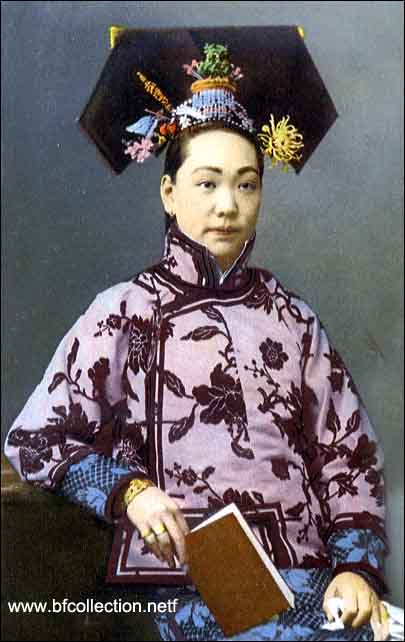 Characteristics: maximal Nordsinid facial structure. 2.) Chosonid [Korean] - found in Korea.  Characteristics: average growth of facial hair, rather wide nose, thicker lips than other Nordsinids, larger face size, some depigmentation, and differs from other Nordsinids in that it is more brachycephalic. There is a Tungid and Austrid impurity within Korea. MittelsinidQiangid [Tibetan] - found in Tibet.  Characteristics: technically a predominately Sinid type, but combines Kumid features most of the time.
|
|
|
|
Post by mike2 on Jun 17, 2005 2:29:46 GMT -5
SOUTHERN MONGOLOID RACEGeneralSouthern Mongoloid [Paleomongoloid, Austrid] - found in southern China, Burma, Indochina, Taiwan, the Phillipines, Malaysia, Indonesia, Oceania, and Madagascar. Mixed with Australoids. Characteristics: short stature, high narrow skull, small low narrow face, expressed mesognathy, very weak facial and body hair growth, coarse black hair, swarthy skin but does not reach very dark shades, set of eyes can be wide, epicanthus is rare, wide concave and poorly projecting nose, and thick lips. Most Austrids have obvious Australoid mixture but their basically Mongoloid anatomy trumps this influence in many cases. Austrasian1.) Vietnamese Austrasian - found on the east coast of Indochina in Vietnam. Mixed with Australoids.  Characteristics: smooth hair, yellowish skin, high epicanthus frequency, and differs from Khmer variant in that the Vietnamese variant has shorter stature and less brachycephaly. 2.) Khmer Austrasian - found in the south and west of Indochina. Mixed with Australoids.  Characteristics: wavy hair, light brown skin, rare epicanthus frequency, and differs from Vietnamese Austrasian in that the Khmer variant has taller stature and more brachycephaly. 3.) Miao-Yao Austrasian - found in the north Indochina. Mixed with Australoids. 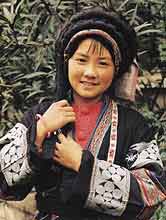 Characteristics: yellowish skin, high epicanthus frequency, wavy hair, and differs from Vietnamese Austrasian in that the Miao-Yao variant has taller stature and more brachycephaly. Austronesian1.) Indonesian [Dayak Austronesian] - found in the Dayak internal areas of Kalimantan on Borneo, most of northeastern Indonesia, and also on the Phillipines and Taiwan. Mixed with Australoids.  Characteristics: differs from Malayan type in that the Indonesian type has shorter stature, a longer head, wider nose, shorter face, less frequency of epicanthus, and less Mongoloid attributes because it probably represents the second wave of ancient settling of Indonesia which pressed into the most ancient Veddoid and Negritoid population, of which with it is clearly mixed. 2.) Malayan Austronesian - found in Malaysia, on Java, the Sunda Islands, Sumatra, and the coastal areas of Kalimantan and Sulawesi. Mixed with Australoids.  Characteristics: differs from Indonesian type in that the Malayan type has taller stature, a narrower nose, a higher face, greater frequency of epicanthus in populations, and greater Mongoloid attributes because it probably represents the third and last wave of the ancient settling of Indonesia.
|
|
|
|
Post by mike2 on Jun 17, 2005 2:31:39 GMT -5
AMERIND RACEGeneralAmerind - found in North America, Central America, South America, the Caribbean, and surrounding islands. Characteristics: high and large face with a wide bottom jaw, mesognathy, big and frequently hawked nose, wide mouth, wider eye cracks than Asian Mongoloids, epicanthic fold rare and shows up more often in children, flatness of the face appreciably less than in other Mongoloids, straight hair or less often gently rolling hair, facial hair growth weak, very dark eye and hair pigmentation, swarthy skin of a bronze shade, a usually massive body build, and stature very frequently high but varies. The Pacific and Silvid are the primary North American variants, which are characterized by a straight or aquiline nose, tall stature, and mesocephaly. PacifidPacifid - found on the West Canadian coast, eastern Alaska, and in outskirts of northwestern U.S.A. and in enclaves on the Rio Grande. 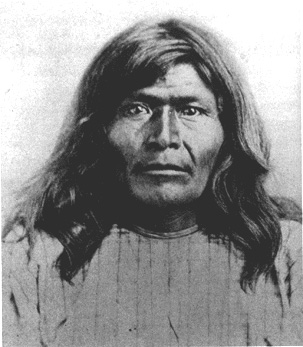 Characteristics: advanced beard growth, shorter stature and darker skin than Silvid type. Some tribes are characterized by a wide nose, thick lips, prognathy, and strong growth of beard. It is possible that this is the result of colonial admixture with Negroids and Caucasoids but it is also possible that it represents an earlier intrusion from Melanesia. SilvidSilvid - found in the wood region from middle to eastern Canada, in the Appalaches, and in the prairie region of the midwest.  Characteristics: differs from Pacifid type in that the Silvid is taller in stature, longer-headed, has much weaker facial hair growth, and lighter skin. MargidMargid - found in California, Sonara, widely scattered remains in Mexico, in the Rocky Mountains, in Florida, and at the eastern coast area up to New Foundland.  Characteristics: the so-called "black Indian" type which differs from other Amerinds in that it has very dark brown skin. CentralidCentralid - found on the southern coast area of the U.S.A. and up to New Mexico and Arizona, eastern and southern Mexico, Central America, and western Colombia. 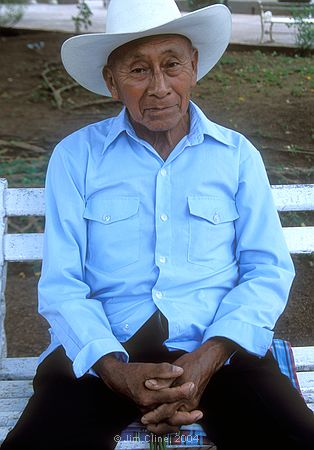 Characteristics: a straight or aquiline nose, short stature, brachycephaly, very dark skin reaching in some groups a rather intense shade which approaches that of the Margids ("black Indians" of California, Arizona, and Mexico). Connects the North American and South American Amerindian racial types together. BrasilidBrasilid/Amazonian - found in the jungle of the Amazonian Basin and the adjacent highlands in the north and south, coastal areas of Brazil, Venezuela, Guyana, and the Caribbean. .jpg) Characteristics: mesocephaly, straight coarse hair, projecting or concave nose, short stature, little lower face than most North American Amerinds, thicker lips, and the face projects forward more strongly. AndidAndid - found in the Andes, the coast of Ecuador, Peru, and northern Chile.  Characteristics: differs from Brasilid in that the Andid is of shorter stature and has less expressly Mongoloid features, a more projecting nose, and a low epicanthus percentage PampidPampid/Patagonian - found in the grasslands of Patagonia, the Pampas, and the Gran Chaco.  Characteristics: straight nose, brachycephaly, a rectangular face with a wide lower jaw, dark-brown skin, and very tall stature. LagidLagid - found in the mountainous country of southeastern Brazil, southern Chile, and scattered remnants in the grasslands of Argentina and Paraguay and in the Brazilian jungle.  Characteristics: dolichocephaly, wavy or even curly hair form, short stature, and the growth of a beard in some groups that is probably due to ancient Melanesian or Australian admixture.
|
|
|
|
Post by mike2 on Jun 17, 2005 2:43:15 GMT -5
COMPOSITES AND OUTLIERSUralic1.) Euro-Uralic - found west of the Urals in the Great European Plain of Russia where it is strongest and east of the Urals among Western Siberians.  Characteristics: basically Baltid with noticeable Yenised features. 2.) Mongolo-Uralic - found west of the Urals in the Great European Plain of Russia and east of the Urals among Western Siberians where it is the strongest.  Characteristics: basically Yenised with noticeable Baltid features, rather low flat face, more often concave nose, rather light pigmentation of hair and eyes for a partially Mongoloid group, soft wavy hair, and thin lips. 3.) Lappish - found in Lappland and the Kola peninsula.  Characteristics: basically Baltid with noticeable Yenised features, dark pigmentation of eyes and hair, short stature, brachycephaly, very low face, concave nose, and an epicanthus sometimes present. TuranidTuranid [Aralid, Southern-Siberian] - found in Turkestan, mostly in the north among the Kazakhs and Kirghiz.  Characteristics: high wide face with appreciable flatness, straight or wavy usually black hair but light shades are not uncommon, mixed eye shades, convex or straight projecting nose, lips of average thickness, differs from similar Ladogan race in that it has more expressive Mongoloid features (such as large face size, large head as a whole, more frequent presence of epicanthus, darker pigmentation, and also a lesser frequency of nasal concavity). Oceanic Nesid1.) General - distributed throughout all of Polynesia and Micronesia. Characteristics: large head, large face, wide lower jaw, mesognathy, wavy black hair, moderate to strong facial hair growth, large dark eyes, precisely outlined and moderately projecting straight nose, very wide nose but not very high, thicker lips than Europeans, light yellowish brown skin, tall stature, and a thickset and massive body size with a tendency to corpulence. On many islands such as Fiji and throughout Micronesia the Papuan-Melanesian impurity is stronger than throughout the rest of Polynesia. As a whole, the Oceanic Nesid race combines attributes of both races in a moderate and softened form but with still very specific and unique features. It is probably closest related to the Ainuid type. 2.) Micronesian - distributed throughout the islands of Micronesia. 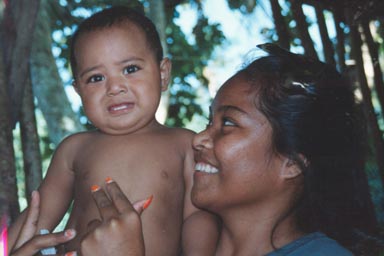 Characteristics: attributes vary widely (even among the population of one island), the form of the hair ranges from straight to spirally, the color of the skin from light brown to chocolate, and there is an occasional presence of the epicanthus. 3.) Polynesian -distributed throughout the islands of Polynesia.  Characteristics: differs from the Maori type in that the standard Polynesian has more prognathy, less projection of the nose, thicker lips, and darker pigmentation. 4.) Maori - found on New Zealand and nearby islands.  Characteristics: differs from the other Polynesian types in that the Maori has less prognathy, slightly more of a projecting nose, thinner lips, and lighter pigmentation. CipangidCipangid [Nipponid] - found on the islands of Japan.  Characteristics: differs from Sinids in that the Cipangid has greater facial hair growth, a significant percentage of wavy hair, darker skin, a wider nose, thicker lips, a lower face, and lower stature. Some northerners are mixed with members of the Ainuid type. AinuidAinuid [Kurilid] - found on Hokkaido, Sakhalin, and the Kuril Islands.  Characteristics: beard development reaches world maximum, flatness of the top part of the face, prognathy, a wide nose, large ears, a big mouth with thick lips, coarse and wavy dark hair, dark skin, short stature, rather massive body build, and the epicanthus is frequent in modern populations due to much assimilation of the Japanese (though centuries ago was probably rare if not entirely absent). It is possible that the ancestors of the Ainu migrated to Japan during the Neolithic.
|
|
|
|
Post by kir on Jun 17, 2005 2:46:32 GMT -5
I might not agree so much with discrete classification, but here is my favourite type of Mongoloid.  Khmer! |
|
|
|
Post by mike2 on Jun 17, 2005 2:47:33 GMT -5
Oh, thanks for switching your post so it doesn't interrupt the system. But now I'm done and you can continue with your posting shenanigans! I might not agree so much with discrete classification, but here is my favourite type of Mongoloid. Yeah, but I don't think they are really all that discrete if you are familiar with such systems. Complicated, busy and somewhat arbitrary (and constantly changing) is more like it. Most reasonable anthropologists admit that there is much overlap between racial types and they are at best guidelines to what populations look like when they separate and evolve their own distinguishing characteristics. It's natural to want to classify things. |
|
|
|
Post by kir on Jun 17, 2005 2:48:26 GMT -5
It’s not that bad of a classification , at least it’s very complete and descriptive. Great pictures, as well.
|
|
|
|
Post by mike2 on Jun 17, 2005 2:50:12 GMT -5
Speaking of Khmers, I think that the Paleomongoloid category is really more of a concept than a reality. Most Austrasians and Austronesians are mixed with Australoids/Veddoids/Negritoids/etc., so calling them pure Mongoloids is stretching it, even if they on the surface look more Mongoloid than Austro.
|
|
|
|
Post by kir on Jun 17, 2005 3:00:21 GMT -5
I know that Austronesians mixed with a Papuan like people in Oceania, as this is apparent in their haplogroups, but what is less clear are populations in SEA who sometimes show similarities to Ainu in some ways; I might have to ask Human2 about this though.
|
|
|
|
Post by guntank on Jun 17, 2005 3:47:31 GMT -5
finally something about mongloids, make this a sticky. BTW, i think the your post on general characteristics is directly from Coon's book.
|
|
|
|
Post by mike2 on Jun 17, 2005 4:02:34 GMT -5
Some of the pics may not match the descriptions as well as I'd like, but hey, I Googled and half-assed it because I'm tired and should go to bed.  |
|
|
|
Post by asdf on Jun 17, 2005 4:29:31 GMT -5
Youth shouldn't be representing anything, nor should geriatrics. Everything looks clear though, except maybe the Brasilid?
|
|